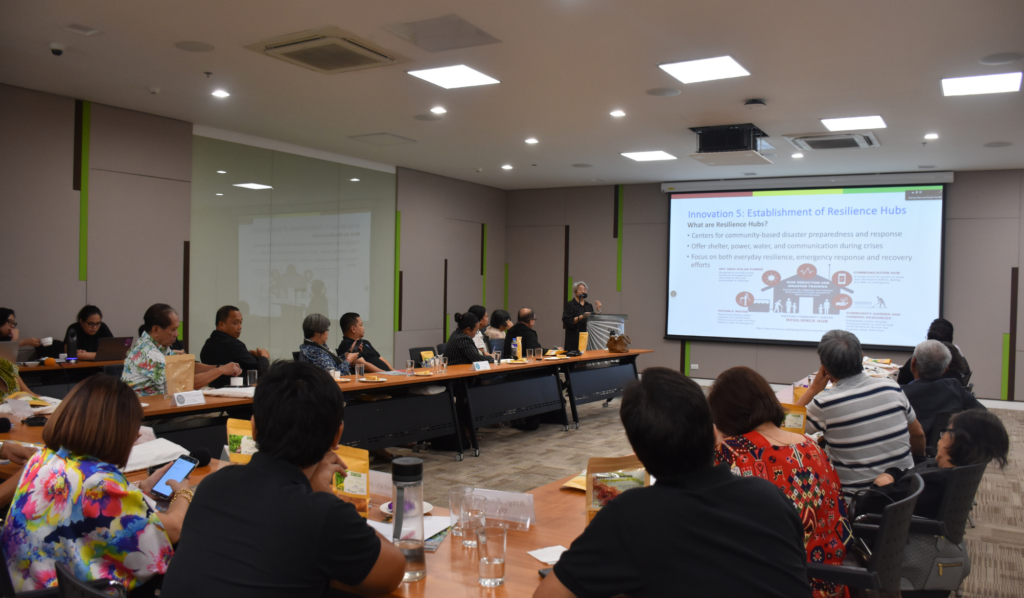
Building climate resilience in agriculture
Quezon City – The Philippines ranks among the most vulnerable to climate change. According to the latest Climate Risk Index report published by GermanWatch, the country was the 10th most affected worldwide from 1993 to 2022, experiencing 372 extreme weather events and incurring an estimated $34 billion in losses.
The adverse impact of climate change goes beyond typhoons. In 2024, it worsened the effects of El Niño, contributing to a 2.2% decline in agricultural and fisheries output, and placing further strain on food security.
As the climate crisis is expected to intensify, urgent action is necessary to mitigate risks and build resilience. This was the focus of a learning session titled “#ClimateReady: Innovations for Resilient Communities,” where Dr. Rosa Perez, Senior Research Fellow at the Manila Observatory, discussed the growing threat of climate change to food systems and the innovations that can help agriculture adapt.
‘Philippines is a nation at risk’
Dr. Perez presented a grim reality: global temperatures have risen to 1.3 degrees Celsius — a threshold set by the world’s scientists to avoid irreversible climate catastrophe. This increase brings more extreme weather events, leading to flooding, structural damage, and even loss of life.
“How do weather and climate affect what ends up on our table?” she asked. “Rice yield dropped by 12% last year. Tuna catch declined by 25%. Coconut farms are suffering from pests and diseases linked to a shifting climate.
From understanding risks to strengthening capacities
Dr. Perez highlighted the importance of using frameworks, such as Bernard Manyena’s resilience model, to design strategies that mitigate the impact of hazards in communities.
“We do not want to bounce back. We want to bounce forward”, she said. “The pillars of our resilience journey are to avert, minimize, and respond to disasters.”
While disasters cannot always be avoided, building and improving capacities can help mitigate the impact of shocks and facilitate adaptation to changes that occur after the disaster.
Innovations that drive resilience
Key strategies shared by Dr. Perez included crop diversification, adopting climate-resilient farming practices, and strengthening local governance systems.
She also showcased innovations that are already making a difference, such as solar-powered irrigation systems, climate and hazard mapping tools, and drought-resistant crop varieties — all of which support agriculture and aquaculture.
“Innovation offers real solutions,” Dr. Perez concluded. “For us, resilience is not just about survival — it’s about thriving in the face of change.”
***
#PEFtalks are knowledge-sharing events that bring together fresh perspectives, expert insights, and innovative solutions on current issues and emerging challenges. These sessions support the Peace and Equity Foundation and its stakeholders in shaping directions and designing effective, grassroots-level interventions.